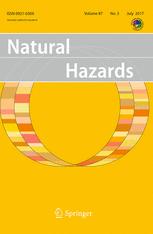A conceptual model of avalanche hazard
Abstract
This conceptual model of avalanche hazard identifies the key components of avalanche hazard and structures them into a systematic, consistent workflow for hazard and risk assessments. The method is applicable to all types of avalanche forecasting operations, and the underlying principles can be applied at any scale in space or time. The concept of an avalanche problem is introduced, describing how different types of avalanche problems directly influence the assessment and management of the risk. Four sequential questions are shown to structure the assessment of avalanche hazard, namely: (1) What type of avalanche problem(s) exists? (2) Where are these problems located in the terrain? (3) How likely is it that an avalanche will occur? and (4) How big will the avalanche be? Our objective was to develop an underpinning for qualitative hazard and risk assessments and address this knowledge gap in the avalanche forecasting literature. We used judgmental decomposition to elicit the avalanche forecasting process from forecasters and then described it within a risk-based framework that is consistent with other natural hazards disciplines.
This is an Open Access publication that can be directly downloaded from this website by clicking here.

